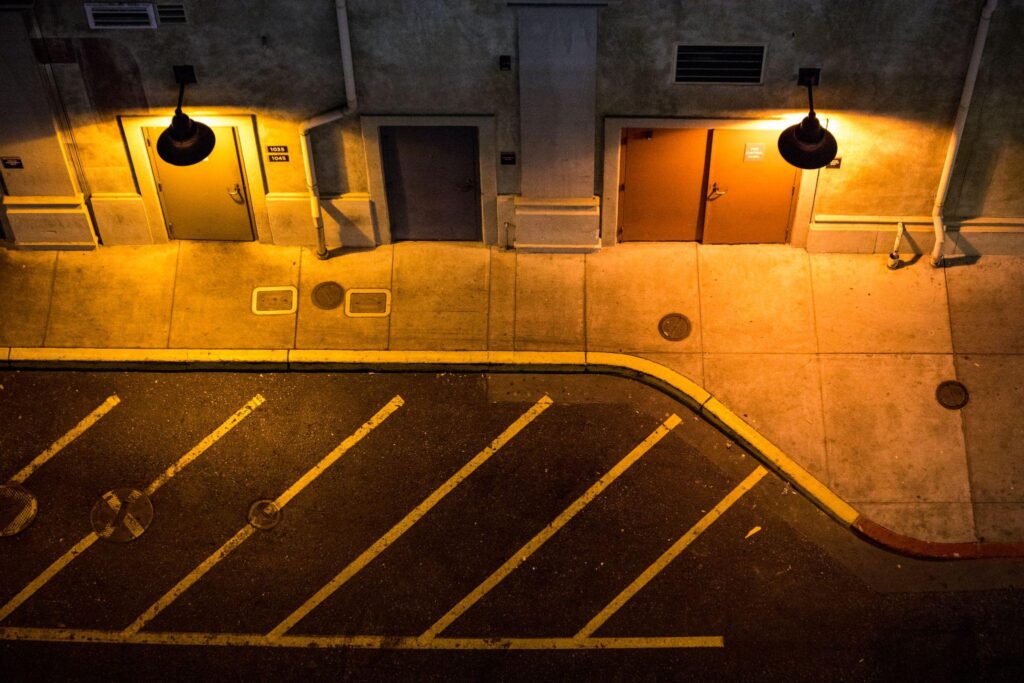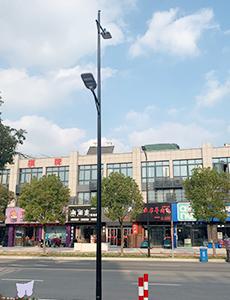Outline
- Introduction
- What Are the Most Sought-After Photocontrol Technologies and Features in the Market?
- How Are Smart Remote Controls and IoT Integration Shaping Modern Photosensors?
- How Do Accuracy and Reliability Impact Automatic Light Sensor Performance?
- Why Are Energy Efficiency and Environmental Friendliness So Important?
- How Do Robust Protection and Durability Ensure Long-Term Use?
- What Features Make Installation and Maintenance Easier?
- What Are the Common Requirements Customers Look for in Photocontrol Receptacles?
- Why Is Smart Functionality a Top Priority?
- Why Does Performance Stability Matter in Urban Environments?
- How Do Customers Achieve Energy Savings and Cost Control?
- What Makes a Photosensor Durable and Weather-Resistant?
- How Important Is Installation Simplicity and After-Sales Support?
- The Bottom Line
The need for lighting control is more than just turning lights on and off. Users want beyond the basic dusk-to-dawn function. They want remote access, intelligent dimming, and real-time feedback. With smart cities expanding, light sensors are evolving fast. But What Makes a lighting control truly smart today?
This article highlights the most in-demand technologies and features modern customers actually look for, so you know what really matters.
What Are the Most Sought-After Photocontrol Technologies and Features in the Market?
How Are Smart Remote Controls and IoT Integration Shaping Modern Photosensors?

Image Courtesy: Georgia Tech
Remote Monitoring and Management
Customers want photocell sensors that enable full remote control. They expect real-time monitoring of light activation, usage hours, and power consumption.
Modern devices report fault alarms (e.g., lamp failure, communication loss). The central diagnostics ultimately boost the quality of services.
Multiple Wireless Communication Protocols
Leading solutions support all the modern communication technologies. This include
- ZigBee
- LoRa
- NB‑IoT
- Wi‑Fi
- 4G/5G.
ZigBee is widely used in mesh networks for street lights. LoRa and NB‑IoT offer long-range, low-power connectivity—ideal for sparse infrastructure . Below is a table outlining a detailed comparison of these protocols.
| Protocol | Range | Power Consumption | Best Use Case |
| Zigbee | 10–100 meters | Low | Short-range mesh networks |
| LoRa | Up to 15 km | Very Low | Wide-area coverage |
| NB-IoT | Up to 10 km | Low | Deep indoor & underground usage |
| Wi-Fi | 50–100 meters | High | High-bandwidth local systems |
| 4G/5G | 10–20 km | Moderate | High-speed, large-scale control |
This flexible multi‑protocol support ensures integration across smart‑city systems.
How Do Accuracy and Reliability Impact Automatic Light Sensor Performance?
Precise Light‑Sensing Control
Photocells now use advanced photoelectric sensors to precisely detect ambient light thresholds. These sensors turn lights on at consistent dusk levels (about 1–5 foot-candles) and off at dawn, avoiding premature switch‑on or off-cycling.
Modern units use optical filters and automatic calibration to maintain accuracy over time, ensuring consistent dusk-to-dawn operation even as LED output varies.
Strong Anti‑Interference Capability
High-end photo switch sensors incorporate background suppression and polarized through-beam detection to resist interference. Units like the LongJoin photcells include modern algorithms to reject sunlight, flicker, and EMI, ensuring reliable performance under variable environmental light.
These technologies collectively minimize false activations from glare, reflections, or artificial lighting.
Why Are Energy Efficiency and Environmental Friendliness So Important?
Intelligent Dimming
Street light controllers with smart dimming help save energy. They reduce light output when traffic is low. The JL‑242/243 series includes a Midnight Dimming feature. It dims lights after midnight and brightens them again before dawn.
These models also use LED Decay Compensation. This function increases brightness slightly as LEDs age, keeping light levels steady. Such features cut energy use while keeping streets well-lit and safe.

Eco‑Friendly Design
There are multiple aspects that make modern photocells environmentally friendly.
- They use very little energy.
- Many models draw less than 1.5 W during operation.
- Their casings are often recyclable following RoHS standards.
How Do Robust Protection and Durability Ensure Long-Term Use?
High Protection Levels
Modern photocell switches are commonly rated IP65 or IP67. This offers a range of benefits. In flood-prone regions, it prevents moisture ingress. It also helps tolerate extreme temperatures from –40 °C to +70 °C. Here is a table discussing the recommended IP ratings by installation environment.
| Environment Type | Minimum IP Rating | Risks Addressed |
| Coastal Areas | IP66/IP67 | Salt spray, humidity, and water ingress |
| Urban Street Lighting | IP65 | Dust, rain, pollutants |
| Industrial Zones | IP67 | Corrosive agents, water jets |
| Tunnel or Underpass | IP66 | Splashing water, condensation |
| Cold Regions | IP65 | Ice, snow, and low-temperature functionality |
Surge and Lightning Protection
Integrated surge protection typically uses 20–40 kA metal oxide varistors (MOVs). This guards against lightning and electrical surges. Some advanced systems offer up to 20 kV protection when combined with IP65-rated housings.
These features significantly reduce failure risks during storms and voltage spikes, extending service life in unstable grid conditions.
What Features Make Installation and Maintenance Easier?
Modular designs
This simplifies installation. Modern photo switch sensors come with flexible mounting options. These include twist-lock, stem, bracketed, and quick-connect types. Many allow tool-free setup. LongJoin’s plug-and-play smart sensors even use USB‑C slots on compatible fixtures, making them even easier to install.
Detailed installation manuals
Clear instructions improve setup success. Manufacturers provide detailed manuals. These guides include wiring diagrams and orientation advice. Brands like LongJoin offer visual resources to prevent installation errors and speed up the process.
Comprehensive after‑sales service
After-sales support adds long-term value. Reliable brands back their products with factory QA and service networks. LongJoin supports over 5 million units worldwide with direct technical help. It also includes 5‑year warranties and risk-free returns to ensure customer satisfaction after purchase.
For a quick checklist, here is a table outlining key features of maintenance-friendly photocells.
| Feature | Description | Benefit |
| Tool-less Mounting | No tools needed for socket connection | Speeds up field installation |
| LED Indicator for Faults | Built-in visual signal for operational errors | Easier diagnostics |
| Modular Plug-in Components | Easily detachable sensor heads or bases | Simplifies repair or upgrades |
| QR Code on Device | Links to manuals or installation videos | Enhances user support |
What Are the Common Requirements Customers Look for in Photocontrol Receptacles?
Modern photocell buyers don’t just want a sensor—they expect a full smart solution. These devices must integrate into an intelligent lighting ecosystem. Let’s explore the top customer requirement:
Why Is Smart Functionality a Top Priority?
Real-time remote monitoring and intelligent management.
Customers demand light sensor switches that stream data—light levels, operational status, and fault events—directly to a central dashboard. Platforms like Verizon’s Intelligent Lighting highlight live scheduling, alerts, and analytics.
Flexibility with multiple wireless protocol integrations.
Buyers expect products compatible with modern tech. Why? Because:
- These advanced communication modules and photocell combos enable scalable mesh networks.
- Offer long-range control.
- Their operations are less costly in terms of power coverage.
Compatibility with smart lighting management platforms.
Top-tier devices plug into systems like Wattstopper DLM or Ubicquia UbiCell, syncing with scheduling tools, energy dashboards, and emergency-response features.
Why Does Performance Stability Matter in Urban Environments?
Performance stability is critical for reliable outdoor lighting. Accurate ambient light detection helps avoid false switching. Advanced street light controllers now feature dual sensors—light plus motion—for better accuracy. The JL‑712G3L, for example, combines 5.8 GHz microwave and light sensing to activate only at true dusk.

Exceptional anti‑interference performance
Lighting challenges in urban dwellings are unique. Stray beams and flicker can confuse standard sensors. High-performance models include optical and signal filters to block these interferences. Anti-interference technology ensures stable control in complex city settings.
Reliable long-term operation
Long-term reliability is key for infrastructure. Rugged photocell designs resist signal drift, moisture, and heat. These features keep failure rates low and reduce maintenance needs. Over time, consistent operation leads to fewer disruptions and lower ownership costs.
How Do Customers Achieve Energy Savings and Cost Control?
Light photocell sensors using dynamic dimming allocate 20–30% energy savings by adjusting light levels based on activity and ambient data. Studies show smart LED systems with quality sensors offer TCO savings of €150–€250 per fixture over 10 years compared to basic systems.
Modern photocells automatically boost light output to offset gradual LED lumen loss. This keeps luminaires within the required lux ranges longer and reduces the need for early replacements.
What Makes a Photosensor Durable and Weather-Resistant?
Several factors determine how durable a light sensor is.
- High IP ratings help block dust and water.
- Corrosion resistance is essential for outdoor use.
- Salt-spray and surge testing confirm it can last in harsh environments.
- International certifications also prove safety and reliability.
Materials play a key role. High-grade plastics or die-cast aluminum resist sun and rain impact. Products with RoHS, CE, or UL marks meet global safety and environmental standards. Many photocells also follow Zhaga Book 18. Here is a table outlining some key standards and their compliance focus.
| Standard | Compliance Focus |
| UL 773 | Safety of plug-in locking-type photocontrols |
| ANSI C136.41 | 7-pin photocontrol interface and dimming protocols |
| RoHS | Limits the use of hazardous materials in electronics |
| IEC 61000-4-5 | Surge immunity requirements for electrical devices |
| CE Marking | Safety, health, and environmental protection |
How Important Is Installation Simplicity and After-Sales Support?
Modern photocells are easy to install. They come with twist-lock or quick-connect options. Many models need no tools. LongJoin’s smart sensors even use USB-C ports on some fixtures for fast plug-and-play setup.
Good manufacturers offer clear instructions. These include
- Step-by-step guides
- Wiring diagrams
- Troubleshooting tips.
After-sales support is just as vital. Lead-Top offers direct factory QA and supports over 5 million units worldwide. LongJoin backs its products with years of warranties and easy returns. Strong support ensures long-term reliability and user confidence.
The Bottom Line
Choosing the right photocell means balancing smart features, reliability, and energy efficiency. Today’s market favors advanced, durable, and easy-to-integrate solutions. Chi-Swear offers high-end photocells that meet these demands with precision and consistency. A trusted choice for smart lighting projects.
External Links
- https://en.wikipedia.org/wiki/Zigbee
- https://en.wikipedia.org/wiki/LoRa
- https://en.wikipedia.org/wiki/Narrowband_IoT
- https://en.wikipedia.org/wiki/Foot-candle
- https://en.wikipedia.org/wiki/Varistor
- https://www.ul.com/
- https://www.ansi.org/
- https://environment.ec.europa.eu/topics/waste-and-recycling/rohs-directive_en
- https://iec.ch/
- https://en.wikipedia.org/wiki/CE_marking






